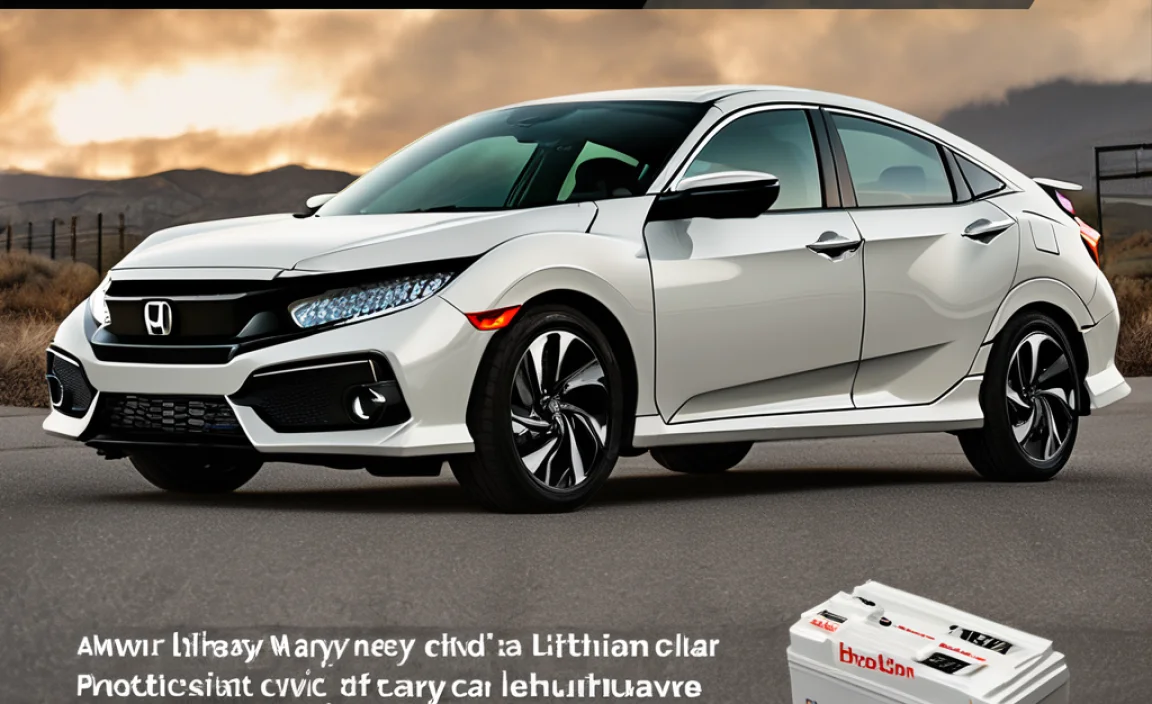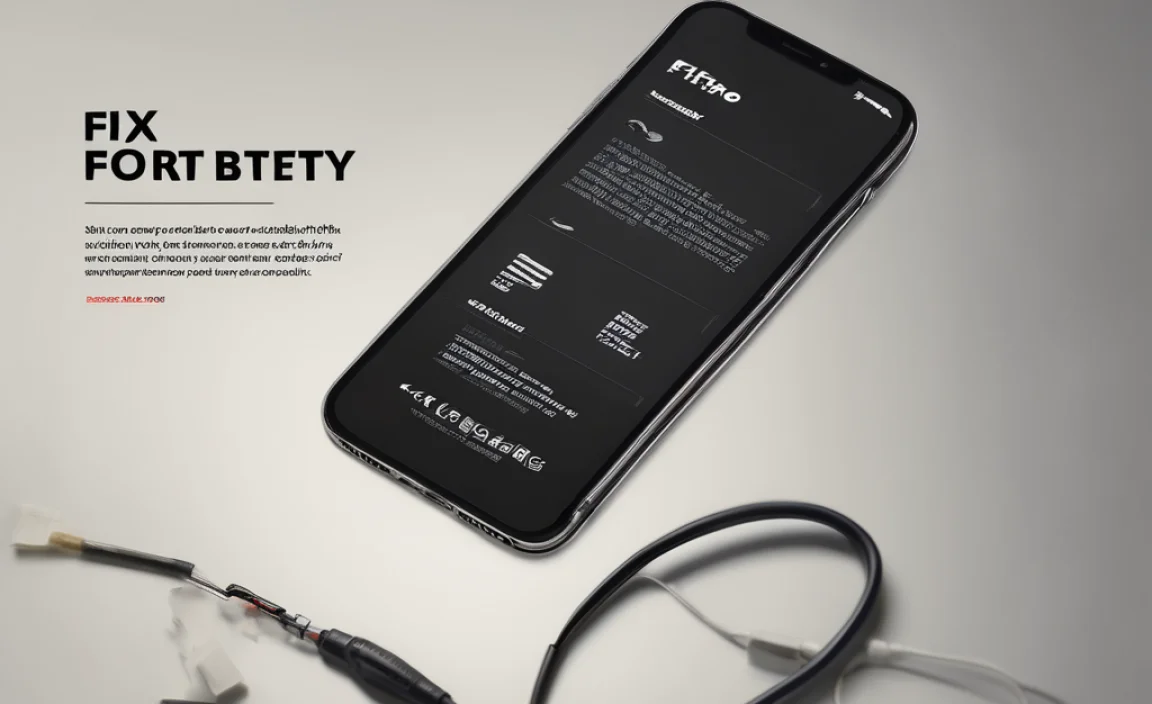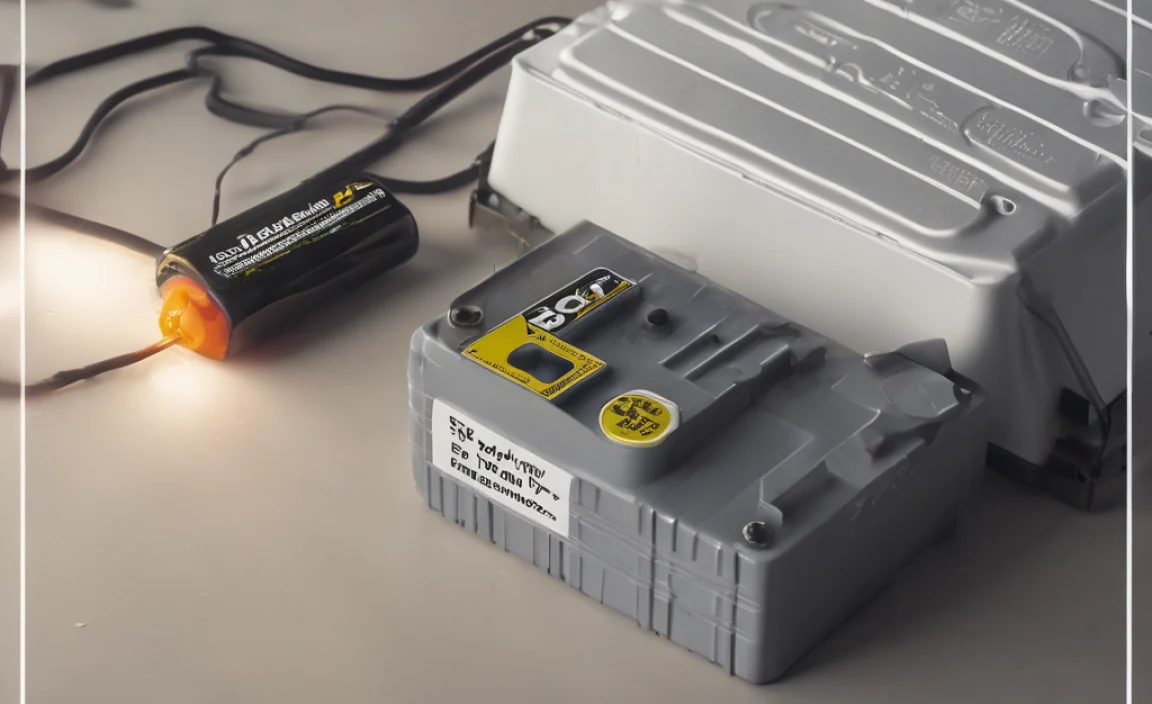Quick Summary: The right battery for your Splat R Ball Gun is essential for powerful shots and consistent fun. This guide helps you choose the best battery to keep your blaster firing, ensuring you have the power you need for every gel ball battle. We’ll cover what matters most, so you can get back to playing.
Gel blasters, like the popular Splat R Ball guns, are a blast for backyard fun and competitive play. But what happens when the action dies down because the blaster’s power source gives out? It’s a common frustration, leaving you mid-battle with a silent, useless toy. Don’t let a dead battery spoil the excitement. Knowing how to pick the right power pack can make all the difference.
This guide is here to help, breaking down everything you need to know about batteries for your Splat R Ball Gun. We’ll look at what makes a good battery and how to keep your blaster shooting strong. Get ready to power up your playtime!
Understanding Your Splat R Ball Gun’s Power Needs
At its heart, your Splat R Ball Gun is an electronic device that needs a consistent flow of energy to operate. The battery is the engine of this energy system. When you pull the trigger, the battery sends electricity to the motor that powers the gel balls and propels them forward. The battery’s quality and type directly affect how powerfully and how long your gun can shoot.
Different Splat R Ball Gun models have different power requirements. Some might be designed for lighter, shorter bursts of play, while others are built for sustained, high-power action. The battery is key to matching the gun’s design. A battery that’s too weak might lead to slow gel ball speeds or fewer shots per charge. Conversely, a battery that’s too powerful for the gun’s components could potentially cause damage or overheating.
Think of it like fitting an engine to a car. You wouldn’t put a massive V8 engine into a tiny compact car without some serious modifications, and you wouldn’t expect a small electric motor to power a truck. The battery needs to be the right fit for the specific demands of your Splat R Ball Gun model.
Key Battery Specifications to Consider
When looking for a replacement or an upgrade battery for your Splat R Ball Gun, a few key specs matter. These numbers might seem technical, but they’re quite simple to understand and crucial for making the right choice.
- Voltage (V): This is like the pressure of electricity. Most Splat R Ball Guns designed for recreational use operate on lower voltages, typically between 7.4V and 11.1V. Using a battery with a higher voltage than recommended can damage your gun’s electronics. Always check your gun’s manual or the original battery for the correct voltage.
- Capacity (mAh – milliampere-hour): This tells you how much energy the battery can store. A higher mAh number means the battery can provide power for a longer time before needing a recharge. If you want to play for extended periods, a battery with a higher mAh is better.
- Discharge Rate (C-rating): This is important for high-performance blasters. The C-rating indicates how quickly a battery can safely deliver its stored energy. A higher C-rating allows the battery to support the high power demands of a rapidly firing motor without getting too hot or losing efficiency. For most standard Splat R Ball Guns, a moderate C-rating is sufficient, but for intense play, a higher C-rating can be beneficial.
- Connector Type: Batteries need to plug into your blaster. There are several common connector types used in RC and airsoft/gel blasters, such as Tamiya (small and large), Deans (T-plug), and XT60. Ensure the battery you choose has a connector that matches your gun’s port. You might need an adapter if they don’t match, but it’s best to get a battery with the correct connector.
Understanding these specs will help you find a battery that fits and performs optimally with your Splat R Ball Gun.
Types of Batteries Commonly Used in Gel Blasters
The world of batteries is diverse, but for toy blasters like Splat R Ball Guns, one type stands out due to its performance, energy density, and rechargeability: Lithium Polymer (LiPo) batteries. While you might encounter other types in different electronics, LiPos are the standard for this kind of hobby equipment.
Lithium Polymer (LiPo) Batteries
LiPo batteries are the go-to power source for many RC vehicles, drones, and electric toy guns like Splat R Ball blasters. They offer a great balance of power, light weight, and capacity.
- Advantages:
- High energy density (more power in a smaller, lighter package).
- Can be manufactured in various shapes and sizes to fit specific compartments.
- Good discharge rates, supporting consistent power for motors.
- Rechargeable, offering a cost-effective and environmentally friendly solution over time.
- Disadvantages/Considerations:
- Require specific LiPo chargers to avoid overcharging or damage.
- Need careful handling to avoid puncture or extreme temperatures, which can be a fire hazard.
- Performance can degrade over many charge cycles.
When you buy a Splat R Ball Gun, it often comes with a basic battery. However, upgrading to a better quality LiPo battery with the correct specifications can significantly improve your blaster’s performance, giving you more shots and a stronger firing rate.
Choosing the Right Battery for Your Splat R Ball Gun
Selecting the perfect battery isn’t just about picking one off the shelf. It’s about ensuring compatibility, safety, and maximizing your gel blasters’ potential. Here’s a step-by-step approach to making a smart choice.
Step 1: Consult Your Splat R Ball Gun Manual
This is the most critical first step. Your Splat R Ball Gun’s manual will specify the recommended battery voltage, type, and sometimes even capacity. Ignoring this can lead to serious issues. For example, a manual for a typical Splat R Ball blaster might state:
“Recommended Battery: 7.4V LiPo Battery, minimum 1200mAh capacity. Always use a balanced LiPo charger. Do not exceed 7.4V.”
This information is your golden ticket to a compatible battery. If you’ve lost your manual, look for the model number of your blaster online and search for the manual or specifications page on the manufacturer’s website or a reputable retailer’s product page.
Step 2: Check the Existing Battery (If Applicable)
If your blaster came with a battery, take a close look at it. The crucial specifications (Voltage, Capacity, and connector type) are usually printed directly on the battery’s label. This is your physical reference point. Note down these details.
Example: You might see:
- “7.4V 1500mAh 25C”
- A specific connector type symbol (e.g., Mini Tamiya)
This visual confirmation helps ensure you’re replacing it with something that works. Remember, capacity (mAh) can often be increased for longer playtime, but voltage (V) and connector type are usually fixed for a specific blaster model.
Step 3: Understand Voltage and Capacity
Voltage (V): This is non-negotiable. Using a battery with a higher voltage than your blaster is designed for can burn out the motor and electronics. Stick to the voltage recommended by the manufacturer. If you are using a 7.4V battery, replace it with another 7.4V battery. If you are using an 11.1V battery, replace it with another 11.1V. Never mix them unless explicitly stated for a specific, modified blaster.
Capacity (mAh): This is where you can often upgrade. If your stock battery is 1000mAh, you could choose a replacement that is 1200mAh, 1500mAh, or even higher. A higher mAh battery will simply last longer on a single charge. The physical size of the battery will need to fit in your blaster’s battery compartment, so check the dimensions if opting for a significantly higher capacity that might come in a larger physical package.
Step 4: Verify Connector Type
This is a common stumbling block. The battery’s connector must physically plug into the blaster’s wiring harness. Common connectors include:
- Tamiya Connectors: Often found in toy-grade blasters. They come in standard (larger) and mini (smaller) sizes.
- Deans (T-Plug): More common in higher-end RC and airsoft guns for their secure connection and lower resistance.
- XT60: Another popular connector for higher-power applications, known for its robust design.
If the battery has a different connector than your blaster, you have a few options:
- Find a battery with the correct connector: This is the easiest and safest route.
- Use an adapter: You can buy adapters (e.g., Tamiya to Deans). However, adapters add an extra point of failure and can sometimes cause minor resistance.
- Solder on a new connector: This is for advanced users who are comfortable with electronics. It involves carefully cutting off the old connector, stripping wires, and soldering on a new one. This can void warranties and requires skill.
Step 5: Consider the C-Rating (Discharge Rate)
For basic Splat R Ball Guns, a lower to moderate C-rating (e.g., 15C-25C) is usually sufficient. This rating indicates how much current the battery can safely deliver. If your blaster has a high-speed motor or you plan to do modifications that increase power draw, a higher C-rating (e.g., 30C, 40C, or more) can prevent battery sag (voltage drop) under load, ensuring consistent performance and preventing the battery from overheating. For most users, the manufacturer’s recommendation or a moderate C-rating is fine.
Step 6: Purchase from Reputable Sources
Buy batteries from trusted retailers or directly from the Splat R Ball Gun manufacturer. Counterfeit or low-quality batteries can be dangerous and may not perform as advertised. Reputable sellers will also provide clear product descriptions and customer support if you have issues.
Essential Accessories for Your Splat R Ball Gun Battery
Having the right battery is only half the battle. To keep it running smoothly and safely, you need the right accessories, especially a charger. Using the wrong charger is one of the quickest ways to damage a LiPo battery and, worse, create a safety hazard.
The Importance of a Proper LiPo Charger
LiPo batteries have specific charging needs. They require a charger designed for LiPo batteries, often called a “balance charger” or “LiPo balance charger.” These chargers do two crucial things:
- Balance Charging: LiPo batteries are made up of individual cells (usually 2 for 7.4V, 3 for 11.1V). For the battery to have a long life and perform optimally, each cell needs to be charged to the same voltage. A balance charger monitors and adjusts the charge to each cell individually via a separate balancing lead on the battery pack.
- Overcharge Protection: Overcharging a LiPo battery can cause it to swell, overheat, and even catch fire. LiPo-specific chargers have built-in safety features to stop charging when the battery is full.
Never use a NiMH or NiCd charger for a LiPo battery. They use different charging algorithms and can cause severe damage and safety risks. A good LiPo balance charger is an investment that protects your battery and ensures your playtime isn’t cut short by damaged power cells.
Battery Safety Practices: What Every User Needs to Know
Safety should always be the top priority when dealing with rechargeable batteries, especially LiPos. Here are essential safety tips:
- Handle with Care: Avoid puncturing, crushing, or dismantling LiPo batteries. Punctures can lead to internal short circuits and fire.
- Charge in a Safe Area: Always charge your batteries on a non-flammable surface, such as concrete or a fire-resistant charging bag. Keep them away from flammable materials like paper, fabric, or wood.
- Monitor Charging: Never leave a LiPo battery charging unattended, especially for extended periods. Check on it periodically to ensure it isn’t swelling or getting excessively hot.
- Store Properly: Store batteries in a cool, dry place, away from direct sunlight and extreme temperatures. If storing for a long time, aim for a “storage charge” level (around 3.8V per cell), which is not fully charged.
- Inspect for Damage: Before charging or using, inspect your battery for any signs of swelling, physical damage, or leaks. If you find any, do not use or charge it. Dispose of it safely according to local regulations for hazardous waste.
- Use the Correct Charger: As mentioned, always use a LiPo-specific balance charger matched to the battery’s voltage.
- Discharge Safely: If a battery is damaged or you need to dispose of it, there are specific methods for safe discharge. A quick Google search for “LiPo battery disposal” will provide options.
By following these safety guidelines, you can greatly reduce the risks associated with LiPo batteries and enjoy your Splat R Ball Gun activities with peace of mind.
Troubleshooting Common Battery Issues
Even with the best care, you might encounter some issues with your Splat R Ball Gun battery. Here are a few common problems and how to tackle them:
| Problem | Possible Cause | Solution |
|---|---|---|
| Blaster shoots weakly or not at all. | Battery is low on charge. | Recharge the battery fully. Ensure it’s properly connected to the charger. |
| Blaster stops working after a short time. | Battery capacity (mAh) is too low for playtime duration. | Consider purchasing a higher capacity (mAh) battery for longer play. Ensure the connector type and voltage are still correct. |
| Battery swells or gets unusually hot during charging. | Improper charging (wrong charger, overcharged) or damaged battery cells. | Stop charging immediately. Do not use the battery. It is damaged and poses a fire risk. Dispose of it safely. Ensure you are using a LiPo balance charger. |
| Battery doesn’t seem to hold a charge for long. | Battery is old and has reached the end of its lifespan, or it has been damaged. | Batteries have a finite number of charge cycles. If it’s an old battery, it’s likely time to replace it with a new one. |
| Blaster not firing, but battery is charged. | Loose battery connection or damaged connector. | Check the battery connector and the port on the blaster for any debris or bent pins. Ensure a secure connection. If the connector is damaged, it may need replacement. |
Remember, if you suspect a battery is damaged or malfunctioning, it’s always safer to replace it. Trying to fix a compromised battery can be dangerous. For more technical issues, consulting an expert or the manufacturer is always a good idea.
The Future of Power: Where to Find More Information
The technology behind batteries is always evolving. While LiPos are dominant now, researchers are constantly working on improvements in energy density



